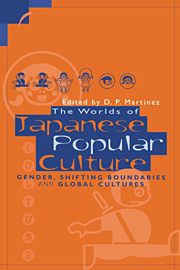Chapter 1 - Sumo in the Popular Culture of Contemporary Japan
Published online by Cambridge University Press: 22 September 2009
Summary
Introduction: Sumo and Japanese culture
Until recently sumo in Japan was considered to be a pre-modern sport, a product of feudalism; moreover, it was thought to be resistant to modernization since it would not change features such as its traditional hairstyles, or the wearing of kimono, etc. However, sumo has survived all this criticism and is currently enjoying a renaissance in Japan, as well as tremendous popularity in many other countries including the UK, Spain, France and the United States. It should be noted that the way the sport is appreciated seems to differ from country to country; that is, it is consumed differently in different places. In Spain sumo is enjoyed more as a fighting sport, while in the UK it is also its ceremonial and stylized aspects which attract people. In Japan, as this chapter will argue, the reasons for the sport's renewed success are more complicated and lie in its association with both theater and the emperor as well as in its retention of various elements which are related to “traditional” Japanese religion.
Paradoxically, it also seems that sumo's current popularity in Japan can be explained by the fact that the sport reflects both the urban culture of the Edo period (1603–1867) as well as being seen to spring from a deep stratum of rural culture. As will be explained below, sumo includes various elements of agricultural ceremonials and cosmology which may have been derived from the immeasurable past.
- Type
- Chapter
- Information
- The Worlds of Japanese Popular CultureGender, Shifting Boundaries and Global Cultures, pp. 19 - 30Publisher: Cambridge University PressPrint publication year: 1998
- 3
- Cited by

